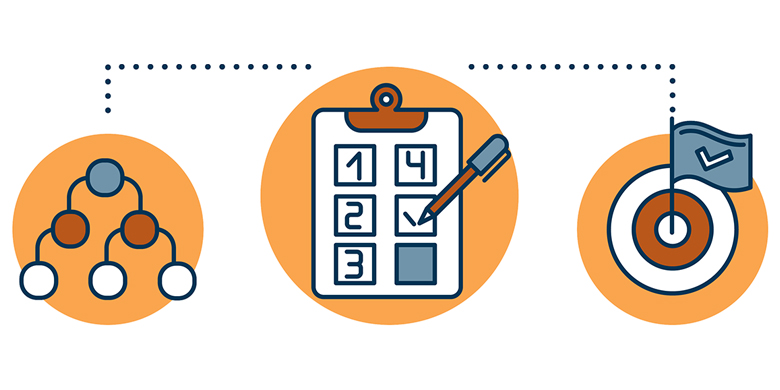Why Prioritization is Important and How to Best Prioritize Your Backlog
When it comes down to it, prioritization of work can be difficult. Even with the best intentions, backlogs become overrun with future epics, features, and tech debt all vying for a place at the front of the queue. So why is prioritization important, and what are some methods to prioritize your backlog? And how do you plan what’s next?
As Benjamin Franklin said, “By failing to prepare, you are preparing to fail.” Without a plan in place for how your team will accept new work and prioritize, backlogs will become overrun, sprints will lack focus, and there will be a lot of work in progress without a goal for completing features and releasing them to customers. Thinking about what’s next and acknowledging that your team can’t work on everything at once and still deliver value to your customers is key.
While it’s not uncommon to have many things fighting for attention, it is important to prioritize those items so that the delivery teams can focus on them. Often in sprint ceremonies, we hear that there are five or more priorities that lack focus and timing considerations. By providing clarity, you are smoothing delivery.
Similar to the way having too much work in progress can impact delivery, continually shifting priorities leads to a lack of focus and slowed delivery. One way to avoid this is to establish goals and communicate them to stakeholders, the team, and potentially even your customers—hence, prioritizing them. Establishing key priorities helps to ensure that the right things get done at the right time, and that other deliverables don’t slip through the cracks. It also helps everyone stay on track by maintaining the prioritization of your backlog.
Focusing delivery on what matters most, and what will bring the most value to customers
When you’re thinking about what can be accomplished in a sprint, release, or quarter – those goals should be customer-focused. What will bring the most value to your customers? What are they waiting on? What surprises do you have ahead and are there any key deliverables that have due dates (contracts, events, etc.)?
As we walk through the different prioritization methods below, these are the things that you should be thinking about. Remember not to make assumptions around what your customers expect and value. When it comes down to it, the only way to understand your customers is to get out and speak with them. Understanding your product is knowing your customers and what problem your product solves for them.
So, how do you manage prioritization and what are the best methods to figure out what’s next? Below are two methods that work well. At the end of the day, which will work best for you comes down to how you and your team work. Like iterating on a product to find the best features, iterate and find the best process.
Stack Ranking
Stack Ranking is the most basic prioritization method. It consists of simply starting at the top of the backlog and prioritizing each item, one at a time.
To Stack Rank your backlog, start by reviewing the first backlog item, just to get a feel for the “ask.” Then take a look at the second backlog item. Is the second item more important than the first? If so, move it above. If not, leave it where it is and move on to the next item. Proceed this way until you get to the bottom of the backlog.
When weighting the items things that should be considered include:
- value to the Customer
- legal requirements
- deadlines
- and dependencies.
Items that are high-value to your customers should be the priority. Contractual, legal, and security items also take precedence. When considering priority, don’t forget timing. If there are any contract deadlines or events that may be planned these must items take precedence. The final consideration is if one item requires another for completion, the item that it is dependent on is a higher priority.
While Stack Ranking can be done alone, pulling in the team and stakeholders will provide perspective and ensure that prioritization considers the product as a whole and not just one perspective. Of course, the more participants the higher the cost. Before meeting with the team and stakeholders, make a few initial passes, prioritize and group similar work items in the backlog. Grouping will allow for a more efficient Stack Ranking process. If similar items are together, they can also be moved together as you work your way through the backlog.
While this may sound tedious, what is great about this method is that when you reach the bottom of the backlog, you are done (at least for now). The backlog is now in order and by making a conscious effort to keep it that way you’re setting the product up for success.
MoSCoW method
The MoSCoW method hails from Rapid Application Development. With this method, items are grouped into one of four categories: must haves, should haves, could haves, and won’t haves.
- Must Have – Items that must be included in the product. These are the items required for Minimum Viable Product (MVP). Without them the delivery would be considered a failure.
- Should Have – Items that are not required but are expected. These items are not as important as Must Haves but aren’t far behind them.
- Could Have – If there is time and budget, these items could be included. They are not as important as Should Have items but would bring value to your customers.
- Won’t Have – Items that will not be included. This doesn’t necessarily mean that the item will never be complete. But at this point in time, these items are not a priority and will not be included in the upcoming releases.
To begin with, the MoSCoW method, determine how you will flag which group each item belongs to. How you do this will depend on your backlog tool. You will want a way to filter and search for each category. If labels are available and searchable, this is the best method. Another way could be to use a priority or stack rank field by assigning a priority/stack rank to each of the four groups.
Once you’ve established how to group the items within the constraints of your backlog tool, next work through the backlog labeling each item with either Must Have, Should Have, Could Have, or Won’t Have. When all backlog items have been categorized, group them by their category and move them into the appropriate order with Must Haves first, Should Haves second, and so on.
Now comes the part that takes discipline, for each category use stack ranking to prioritize the items. Take a look at only the items in each group and decide which is most important. Then what comes next.
You may be thinking, “If these are all Must Haves, does it matter?” Yes, it matters. The backlog order will be the order in which items are picked up and implemented. For Must Haves in particular, dependencies and complexity should be considered, as well as what is most important. The most important items should always be addressed first. If for some reason you were to run out of time for the next delivery, would you want an unexceptional Should Have released instead of a Should Have that will delight your customers.
These are the decisions to be made. Similar to Stack Ranking this is an exercise that can be done alone but gains perspective when stakeholders and the team are included. So these meetings are not long and arduous, start with the grouping exercise. Then in a separate meeting stack rank within the groups. This may take time but once complete you’ll have an organized backlog that will be ready for not only the current release but also future release planning.
Continue Setting Yourself up for Success
Once you know what’s next, it is easier to discuss new work and timing. After completing the prioritization process, don’t just let that hard work fall away. Set yourself up for success by prioritizing new items as they come in. At the end of every sprint, check in to ensure the work planned for the next sprint still aligns with the current priorities.
Once a release or quarter, check-in with stakeholders and the team to ensure that the backlog priorities are still on track. Frequently touch base with customers to gain feedback and find out if there are any new problems to be solved. This will ensure that you’re working on those items that are most important and will bring the most value to customers.
Zack Simon
Reviewer
Big Nerd Ranch
Zack is an Experience Director on the Big Nerd Ranch design team and has worked on products for companies ranging from startups to Fortune 100s. Zack is passionate about customer experience strategy, helping designers grow in their career, and sharpening consulting and delivery practices.





